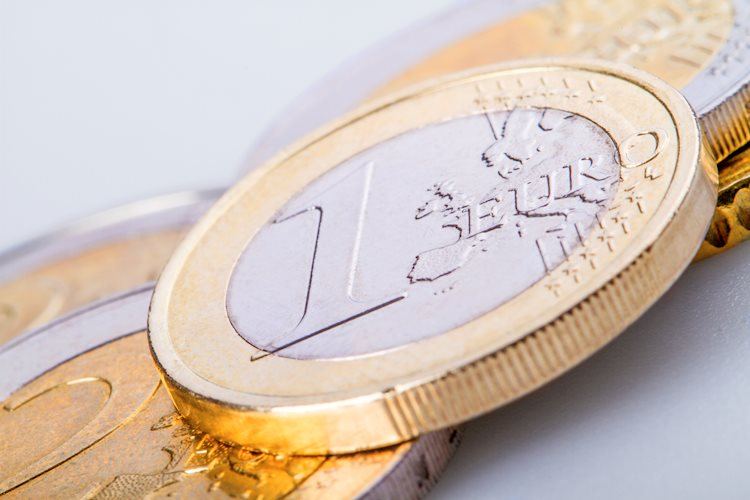- The Euro retreats from earlier highs against the US Dollar.
- European stocks open with a mixed tone on Monday.
- ECB President Christine Lagarde to speak later in the session.
The Euro gives away initial gains against the US Dollar, motivating EUR/USD to surrender part of the earlier advance to the 1.0960 zone at the beginning of the week.
On the flip side, the Greenback bounces off the area of three-month lows near 103.20 when gauged by the USD Index (DXY) in a context still dominated by the appetite for risky assets on Monday.
Meanwhile, the index continues under pressure against the backdrop of growing speculation about an anticipated Federal Reserve (Fed) interest rate reduction in the spring of 2024. This viewpoint is nevertheless strongly supported by sustained disinflationary pressures and continuous labour market softening.
On the domestic calendar, the European Central Bank’s (ECB) President Christine Lagarde will speak before the European Parliament later in the afternoon in Europe.
In the US, New Home Sales for the month of November are due seconded by the Dallas Fed Manufacturing Index in November.
Daily digest market movers: Euro meets some resistance near 1.0960
- The EUR trims earlier gains against the USD.
- US and German yields trade with a marginal upside bias.
- Investors continue to expect rate cuts by the Fed in H1 2024.
- The market consensus sees a potential rates reduction by the ECB in Q1 2024.
- BoE’s Andrew Bailey said dragging inflation to the target will be hard work.
- BoJ’s Kazuo Ueda has argued that the economy is recovering at a modest pace.
Technical Analysis: Euro and the hunt for 1.1000
EUR/USD’s bullish intentions bumped against the 1.0960 region so far on Monday.
The November high of 1.0965 (November 21) is now the immediate goal for bulls ahead of the critical 1.1000 level. Further north, EUR/USD might face resistance around the August top of 1.1064 (August 10) and another weekly peak of 1.1149 (July 27), all preceding the 2023 high of 1.1275 (July 18).
In the meanwhile, any corrective dips should find support initially at the key 200-day SMA at 1.0810, seconded by the temporary 55-day SMA at 1.0662. Before the 2023 low of 1.0448 (October 3), the weekly low of 1.0495 (October 13) emerges below that region.
Overall, the pair’s chances should remain strong as long as it stays above the 200-day SMA.
Euro FAQs
The Euro is the currency for the 20 European Union countries that belong to the Eurozone. It is the second most heavily traded currency in the world behind the US Dollar. In 2022, it accounted for 31% of all foreign exchange transactions, with an average daily turnover of over $2.2 trillion a day.
EUR/USD is the most heavily traded currency pair in the world, accounting for an estimated 30% off all transactions, followed by EUR/JPY (4%), EUR/GBP (3%) and EUR/AUD (2%).
The European Central Bank (ECB) in Frankfurt, Germany, is the reserve bank for the Eurozone. The ECB sets interest rates and manages monetary policy.
The ECB’s primary mandate is to maintain price stability, which means either controlling inflation or stimulating growth. Its primary tool is the raising or lowering of interest rates. Relatively high interest rates – or the expectation of higher rates – will usually benefit the Euro and vice versa.
The ECB Governing Council makes monetary policy decisions at meetings held eight times a year. Decisions are made by heads of the Eurozone national banks and six permanent members, including the President of the ECB, Christine Lagarde.
Eurozone inflation data, measured by the Harmonized Index of Consumer Prices (HICP), is an important econometric for the Euro. If inflation rises more than expected, especially if above the ECB’s 2% target, it obliges the ECB to raise interest rates to bring it back under control.
Relatively high interest rates compared to its counterparts will usually benefit the Euro, as it makes the region more attractive as a place for global investors to park their money.
Data releases gauge the health of the economy and can impact on the Euro. Indicators such as GDP, Manufacturing and Services PMIs, employment, and consumer sentiment surveys can all influence the direction of the single currency.
A strong economy is good for the Euro. Not only does it attract more foreign investment but it may encourage the ECB to put up interest rates, which will directly strengthen the Euro. Otherwise, if economic data is weak, the Euro is likely to fall.
Economic data for the four largest economies in the euro area (Germany, France, Italy and Spain) are especially significant, as they account for 75% of the Eurozone’s economy.
Another significant data release for the Euro is the Trade Balance. This indicator measures the difference between what a country earns from its exports and what it spends on imports over a given period.
If a country produces highly sought after exports then its currency will gain in value purely from the extra demand created from foreign buyers seeking to purchase these goods. Therefore, a positive net Trade Balance strengthens a currency and vice versa for a negative balance.
